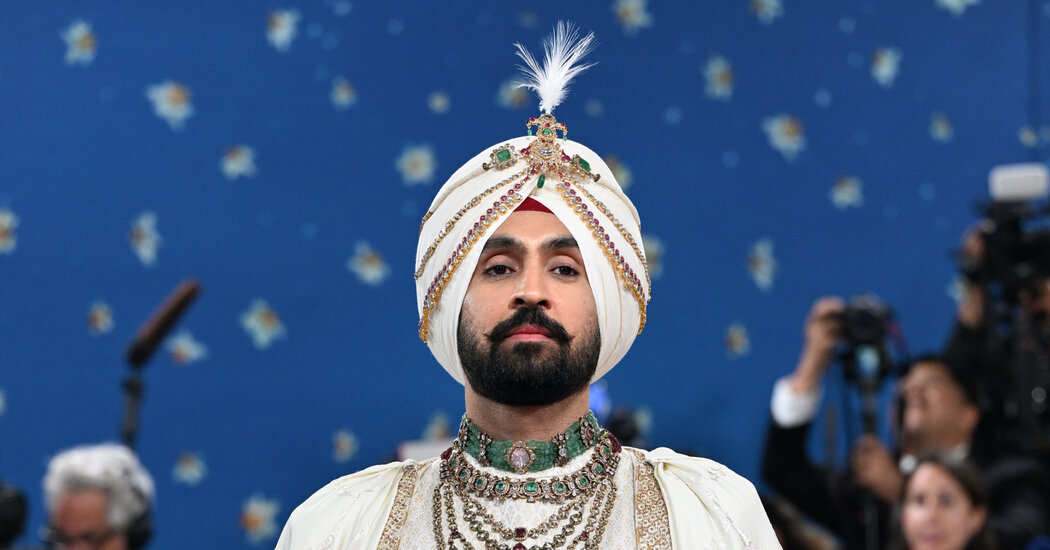Diljit Dosanjh defies labels. His melding of Punjabi music with hip-hop and rap has created a unique sound that has turned him into a star. In 2023, he became the first Punjabi musician to perform at Coachella; he has collaborated with stars like Sia, Ed Sheeran and NLE Choppa; and has consistently topped global charts.
On Monday, he made his first appearance at the Met Gala.
The focus on dandyism is, to him, a perfect fit: “It’s what I’ve been doing all this time,” he said. On the eve of the event, the artist, who goes by Diljit, mused on his look for the night while perched on the sofa in his hotel room at the Plaza. “It’s about carrying your identity with pride, right?” he said.
In his time on the global stage, Diljit has cultivated a visual identity that is almost as genre-bending as his music. He fuses traditional attire — a turban (a symbol of Sikh identity) and a kurta and tehmat (a long tunic and draped bottoms) — with modern-day twists. He’ll often pair his outfits with sneakers and sprinkle his looks with jewelry, like big gold hoops and chunky necklaces — what he calls the “cherry on top.”
He walked the steps of the Met in a look designed to emulate Sir Bhupinder Singh, the early 20th century Maharaja of Patiala from the Punjab region of India.
Diljit’s ivory and gold sherwani (a classic Indian jacket), pants and cape, designed by Prabal Gurung, were based on archival images of the maharaja, who was known for his opulent lifestyle, said his stylist, Abhilasha Devnani. One example: In 1928, the prince commissioned Cartier to make him a diamond necklace that weighed 1,000 carats — the largest necklace the French jeweler has ever made.
To complete Diljit’s look, Ms. Devnani tried to borrow that iconic Cartier necklace for the night. But, she said, it sits sealed in a museum, so she commissioned the Indian jeweler Golecha’s to create jewelry inspired by the prince’s collection, including a turban brooch.
The look features hand-embroidered motifs of India’s cultural markers, like lotus flowers and peacocks on the belt, and, on the cape, an artistic representation of the state of Punjab as well as Punjabi script, known as Gurmukhi.
The outfit is, in many ways, an ode to the rich sartorial history of the subcontinent, Mr. Gurung said, where for centuries, royalty dressed with such extravagant flair that they themselves were the subject of the Metropolitan Museum of Art’s Costume Institute in 1985.
The touches on the cape were Diljit’s idea, Mr. Gurung said. “He’s unapologetically himself” and is highlighting a culture rarely seen in the global spotlight.
What, he asked, is dandyism if not that?


